MLI Audit Report
Natalia Larina (Unlicensed)
Anastasia Medovkina (Deactivated)
Once you set up an MLI hierarchy, it does not mean it will remain eternal. There are times when you need to update an existing MLI configuration. Each time you do it via the interface or using templates, we save all the changes that can be later retrieved in an MLI audit report. This comes in especially handy when your company is huge, and it is hard to trace what exactly was updated and by whom.
- In Admin > Invoices > MLI Configuration, locate the MLI Audit Report section.
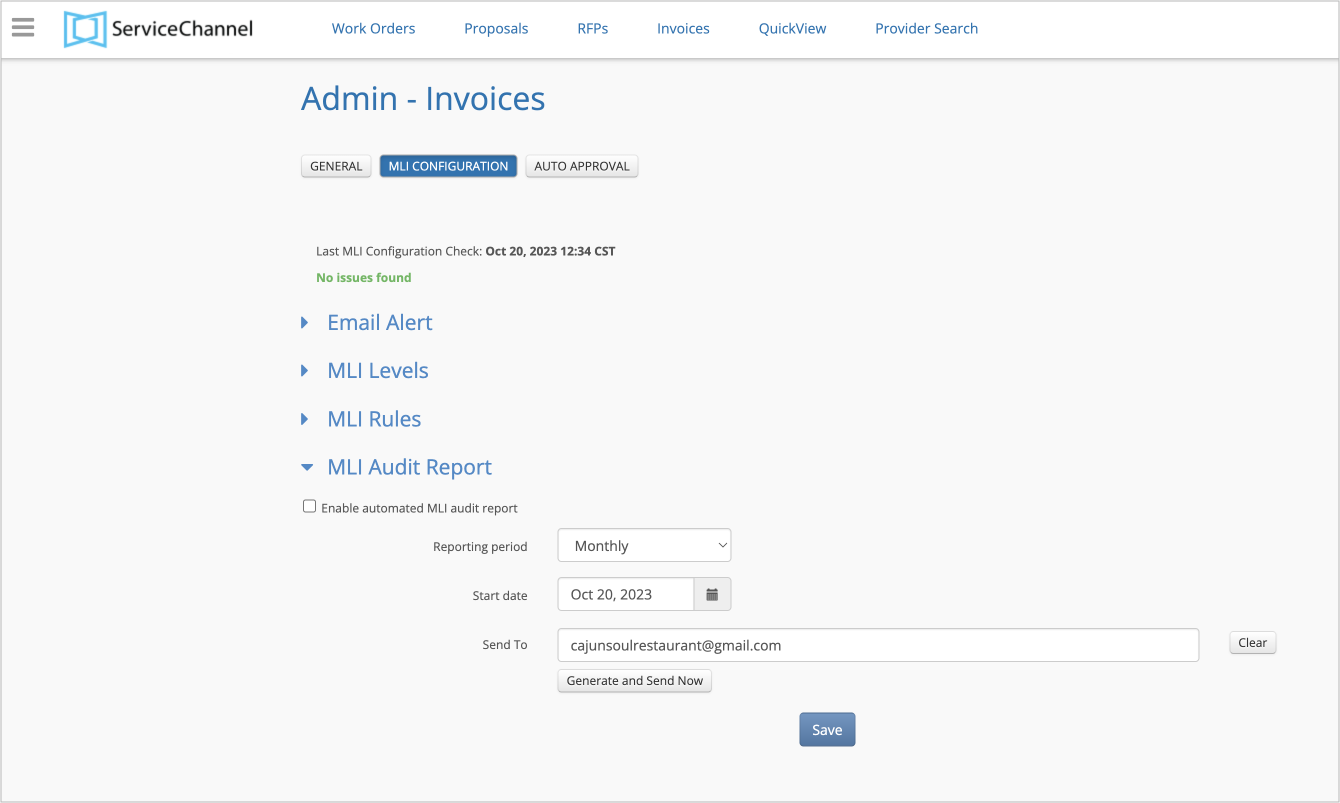
Setting Up the MLI Audit Report
You can create a one-time MLI audit report to check the current MLI configuration and changes made by other users. Or, you may set up a regular report to automatically generate reports and send them to particular employees regularly.
- In the MLI Audit Report section, select the reporting period:
- Daily
- Weekly
- Monthly
- Quarter
- Custom Date Range
.png?version=1&modificationDate=1698414788643&cacheVersion=1&api=v2&width=600&height=435)
Use the date picker next to Start Date to set the date starting from which you want to begin generating reports. By default, the date after the current date is selected.
You cannot select a date in the past unless you have chosen the Custom Date Range period.
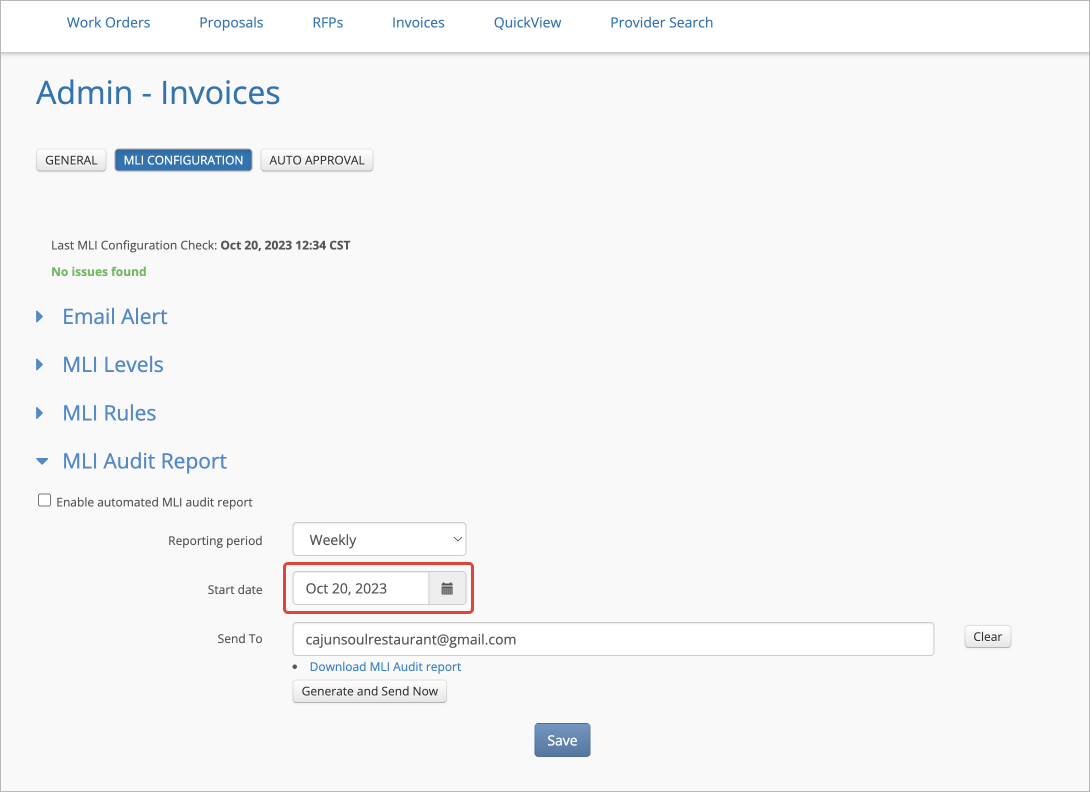
If you used the Custom Date Range, specify the date period for the audit.
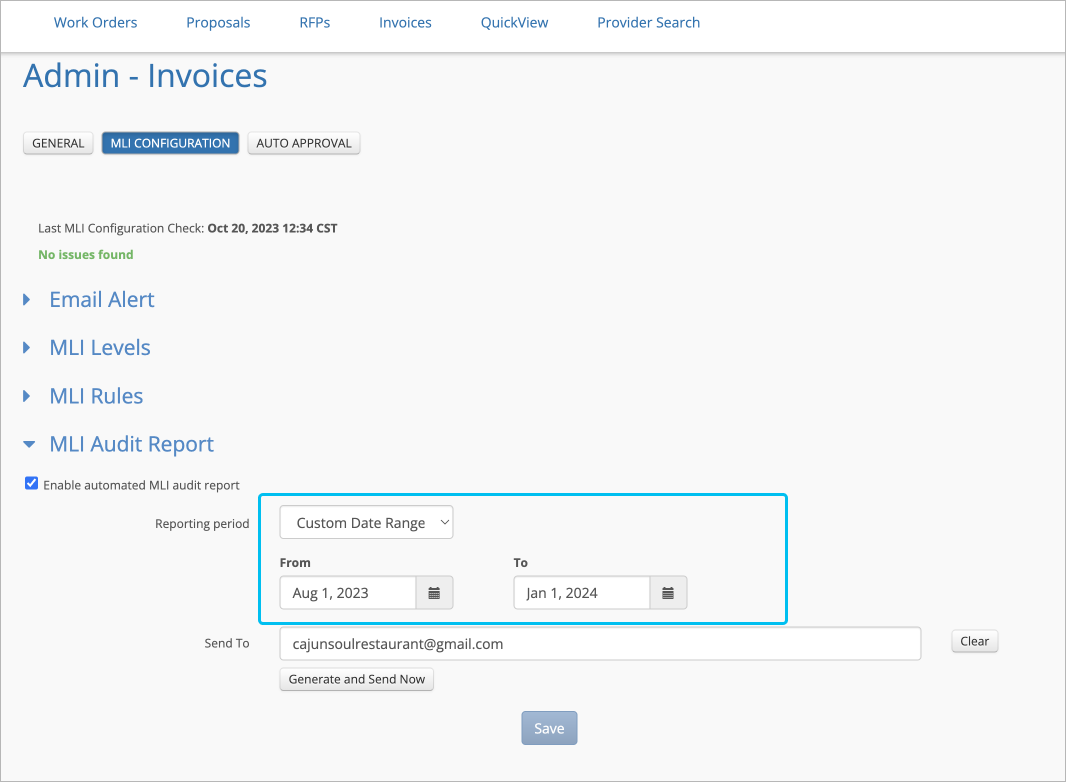
Enter the email addresses to send the report to.
You can enter no more than 1,000 characters.To add multiple emails, use a semicolon as a separator. In case of an error, click Clear to the left of the Send To field.
Click Generate and Send Now below the Send To field.
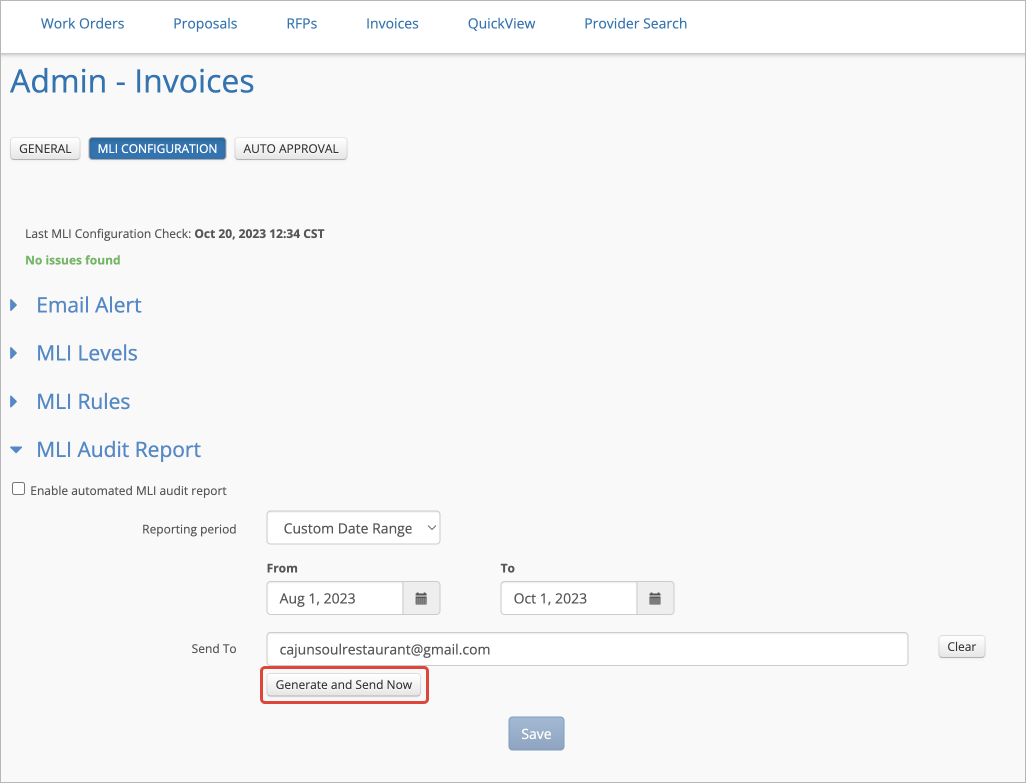
The generated report will be sent to the emails specified in the Send To field.If you want to save the list of emails and the selected reporting period for future usage, for example, to start sending regular reports, click Save. Otherwise, the Send To and Reporting Period fields will be blank the next time you open the MLI Configuration tab.
Note that you cannot save the configuration if you selected the Custom Date Range period.
- (Optional) Click the Download MLI Audit Report link to save the report to your computer.
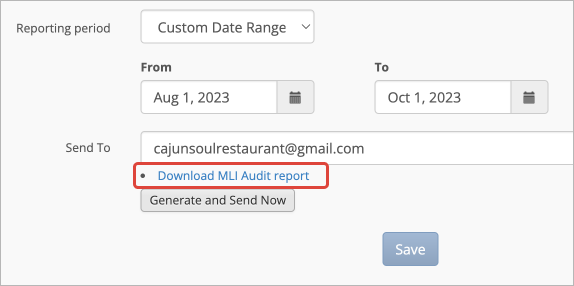
The report is saved to your computer.
If you want to track changes in the MLI configuration on a regular basis, set up a regular MLI audit report. It will be automatically created at the selected frequency and sent to the emails you specify.
Read the instruction below for more information.
- In the MLI Audit Report section, select the Enable Automated MLI Audit Report checkbox.

- Select the reporting period:
- Daily
- Weekly
- Monthly
- Quarter
Note that selecting the Custom Date Range option can be used only for one-time generated reports.
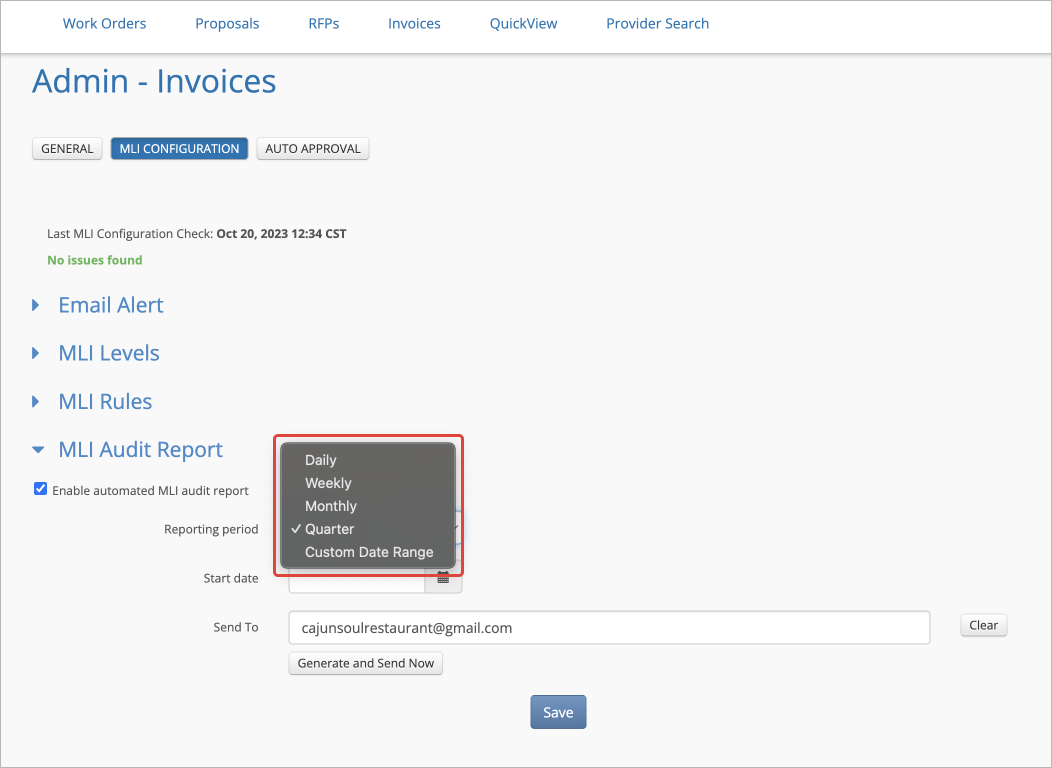
Use the date picker next to the Start Date to set the date starting from which you want to begin generating reports. By default, the date after the current date is selected.
You cannot select a date in the past for regular reports.
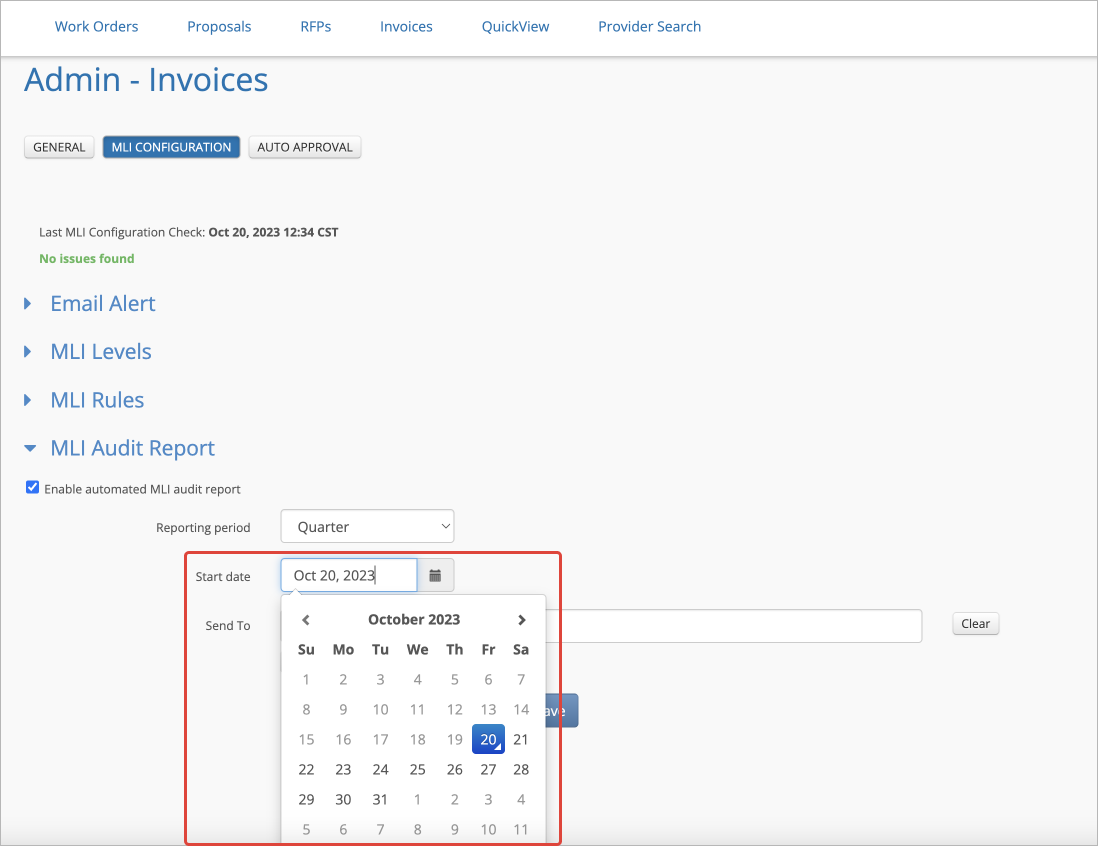
Enter the email addresses to send the report to. You can enter no more than 1,000 characters.
To add multiple emails, use a semicolon as a separator. In case of an error, click Clear to the left of the Send To field.
- Click Save to apply the changes.
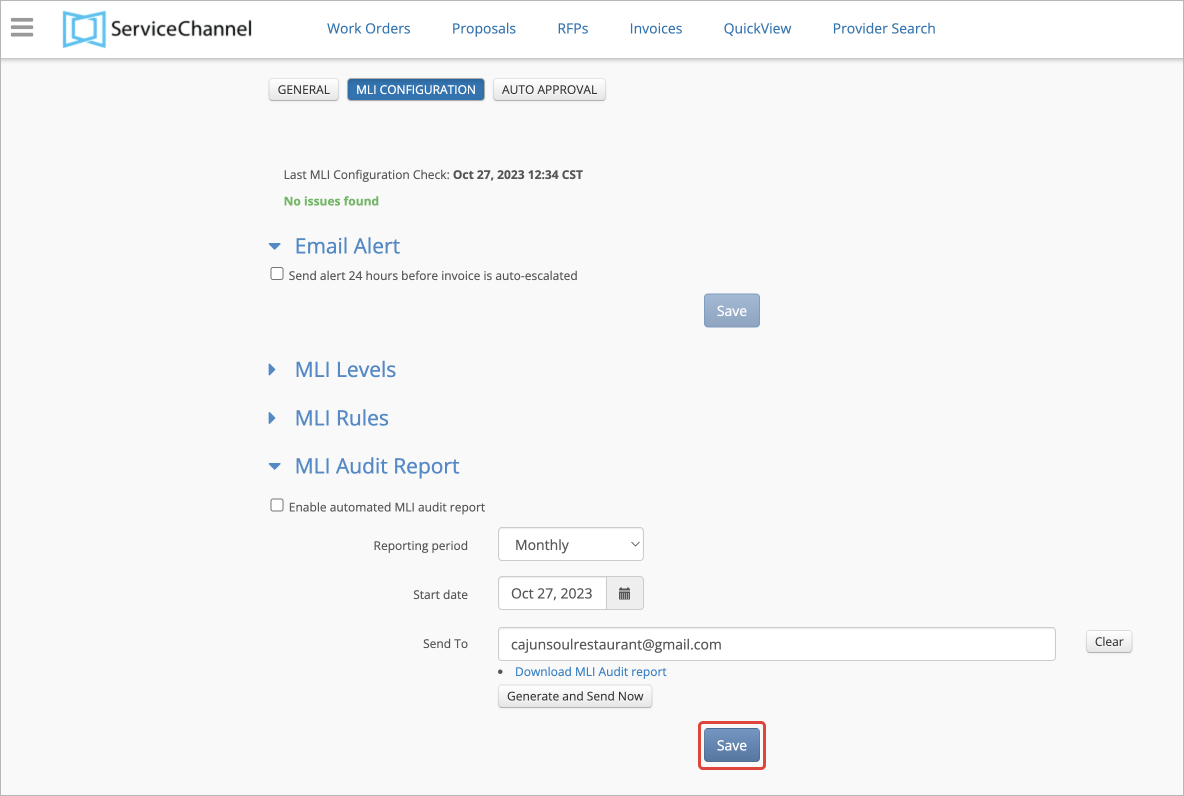
- (Optional) Click Generate and Send Now should you want to send the report to the specified emails right now.
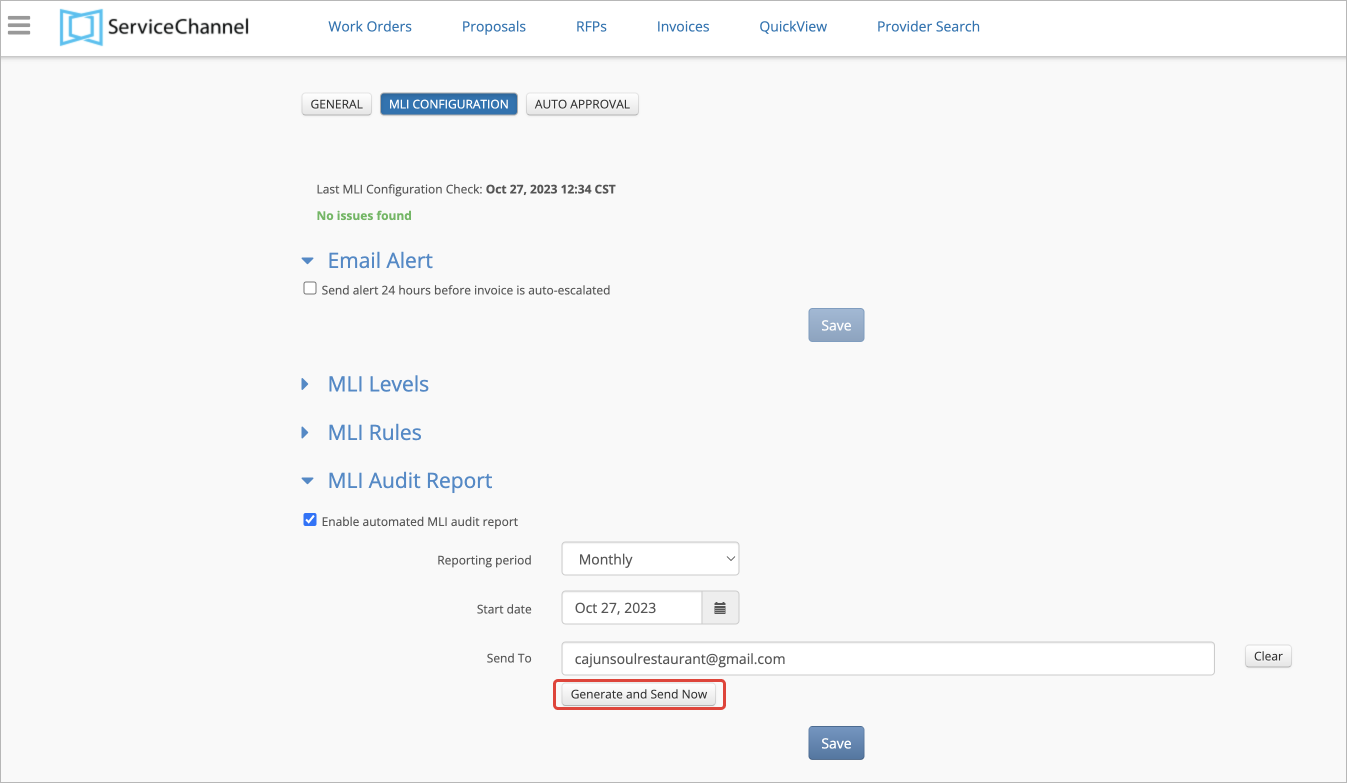
- (Optional) Click the Download MLI Audit Report link to save the generated report to your computer.
.png?version=1&modificationDate=1698415594948&cacheVersion=1&api=v2&width=600&height=403)
Once you get hold of the MLI audit report, you can open it and view the details.
Viewing Info in the MLI Audit Report
The MLI audit report contains five default tabs:
- Summary. Includes a short overview of the company name and dates of the report.
- Changes. Lists all changes that happened within the configured period.
- Hierarchy. Depicts the MLI hierarchy for each location.
- RuleSetMatrix. Contains the trade and categories belonging to each MLI rule set.
- Default Rule Set. Shows the settings of the default MLI rule set.
The report may include more tabs if you have custom MLI rule sets configured for your company. Each custom rule set appears as an individual tab in the report and contains the associated changes. Such tabs will be the last tabs in the MLI audit report.
Switch between the tabs below to learn what info you can find in the MLI audit report.
-
Page:
-
Page:
-
Page:
-
Page:
-
Page:
-
Page:
-
Page:
-
Page:
